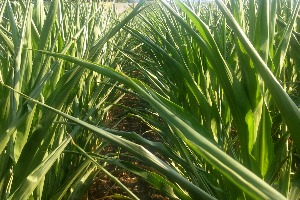Drought can raise nitrate levels in corn

The drought that is hitting the US Midwest is causing corn to concentrate nitrates, forming a potential health hazard for livestock. Early harvesting of corn could mean a poisoned meal.
These were the messages of Tim Evans, an associate professor of veterinary pathobiology and toxicology section head at the Veterinary Medical Diagnostic Laboratory at the University of Missouri College of Veterinary Medicine. He is warning farmers that drought-damaged corn plants can pose a risk to animal health.
“During severe drought conditions, corn plants, especially those heavily fertilised with nitrogen, can accumulate a chemical called ‘nitrate’,” Evans said. “This chemical can be very harmful to animals, if they eat corn plants or other vegetation containing too much nitrate. Eating plants with too much nitrate can cause damage to red blood cells, resulting in lethargy, miscarriage, and even sudden death.”
The drought is forcing farmers to abandon ruined corn crops across much of the US Midwest. With lowered expectations of this year’s corn crop yield, farmers have already started harvesting, in an effort to salvage what they can.
The drought causes the nitrates that the plants take up to concentrate in the upper portions of the stalk. Normally, corn only absorbs nitrate into the lower stalk.
Given that livestock consume the upper portions, the animals run the risk of nitrate toxicity, which can lead to death.
High nitrate levels in plants are generally not a danger to humans.
Related websites:
- Veterinary Medical Diagnostic Laboratory at the Univ. of Missouri College of Veterinary Medicine
- Nitrate info











